Edible honeysuckle is an upright deciduous shrub and is common in the temperate climate of the Northern Hemisphere. In wild-growing species, the fruits are small, sour, often with pronounced bitterness. They are prone to shedding, ripen unevenly. Despite the unique healing properties, the breeding of new varieties was seriously taken up only in the 50s of the last century.
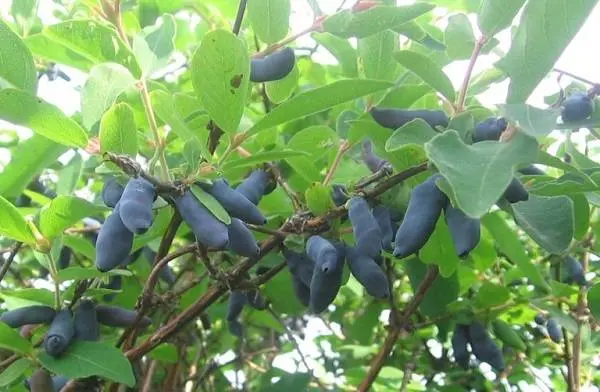
Variety description
One of the best varieties that have appeared in recent years is Bakcharskaya Yubileinaya. This is an interspecific hybrid of Kamchatka and Turchaninov honeysuckles. The variety was bred by the Bakchar stronghold of northern horticulture named after. M. A. Lisavenko at NIISS, in 2005 was accepted for testing by the State Sort Commission.
TECH SPECS
The honeysuckle variety Bakcharskaya Yubileinaya has a rounded crown with straight, sparse branches. An adult bush reaches a height of 1,6-1,8 m, a width of 1,2 m. The shoots are completely woody, like in other varieties of honeysuckle.

The fruits of the variety Bakcharskaya Yubileinaya have an elongated or oval shape, dark purple color with a wax coating. Their length can reach 3,3 cm, diameter – 1,2 cm. The size, weight and ripening time of honeysuckle berries are highly dependent on external conditions and cultivation intensity:
- In a carefully maintained private garden, fruits weighing 1,4-1,8 g each grow, the yield is 2,5-3,0 kg per bush.
- In industrial cultivation, berries reach 0,9-1,0 g (this is a very good result for honeysuckle), up to 2 kg are harvested from the plant.
- The best results shown by the variety Bakcharskaya Yubileinaya are fruits weighing 2,1 g with a yield of 4,6 kg per bush.
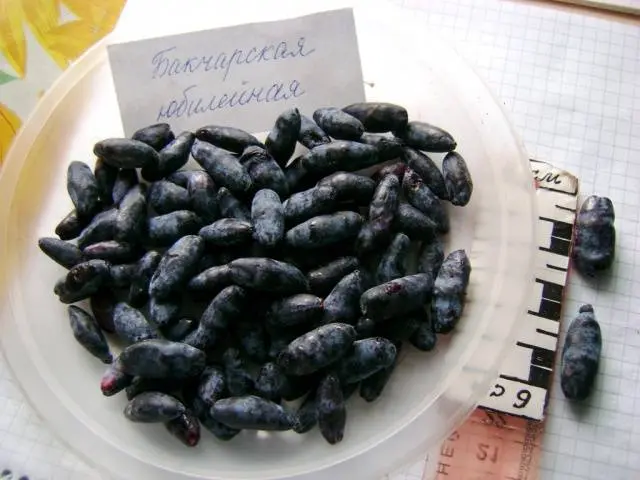
Bakcharskaya Yubileinaya is a medium-late, slightly crumbling variety, that is, only up to 20% of the fruits fall to the ground after ripening. The berries of this honeysuckle are located in a heap, it is convenient to carry out both mechanized and manual harvesting.
Pollinators
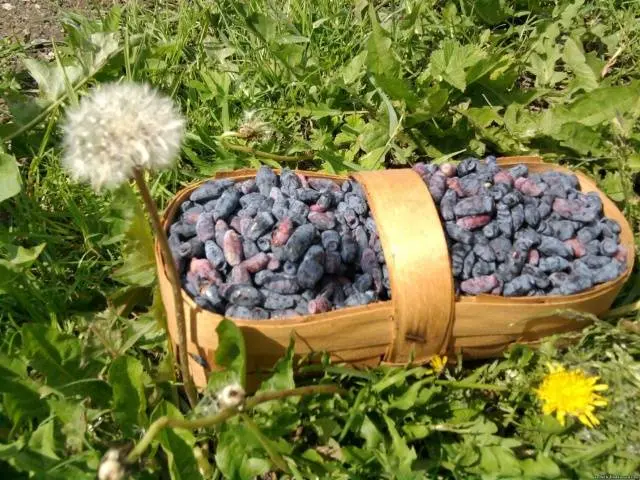
Honeysuckle is self-fertile and has bisexual flowers. It is pollinated by bees and bumblebees. The plant is an excellent honey plant and not only does not need to attract beneficial insects, but can itself serve as bait for them.
To get a decent harvest, honeysuckle of at least 2-3 varieties should be planted nearby, otherwise even an adult bush will at best give a few berries, although it will bloom profusely. For Bakcharskaya Yubileinaya, Silginka is considered the best pollinator.
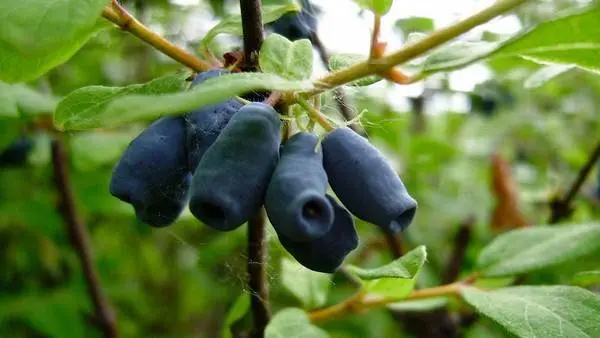
Advantages and disadvantages
The honeysuckle variety Bakcharskaya Yubileinaya is one of the most promising. Its advantages include:
- Excellent taste – 4,8 points.
- High content of useful substances.
- High yield.
- fruiting stability.
- Large berries.
- Winter hardiness. Honeysuckle withstands frosts up to 48-56 degrees, flowers do not fall off at -7.
- Ease of harvesting due to the accuracy of the location of the berries and the looseness of the crown.
- Precocity. 2-3 years after the planting of the Bakcharskaya Yubileinaya, a decent harvest can be harvested (for most varieties, this period begins after 6 years).
- Dry separation of berries. This makes it possible not only to process or dry the fruits, but also to freeze the honeysuckle.
- Most of the crop does not crumble and stays on the bush for a long time, without losing taste and commercial qualities.
- Undemanding and ease of care.
- With a good location in one place, honeysuckle grows for 20-30 years.
The disadvantages of the variety include:
- Self-infertility.
- A certain number of berries still crumble, ripen unevenly.
- In the southern regions, it is difficult to grow healthy, stably fruiting honeysuckle that meets varietal characteristics.
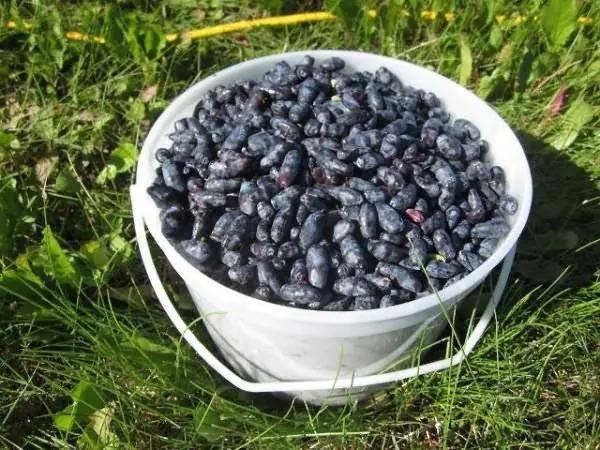
Accommodation on the site
Honeysuckle is a plant of a temperate climate, it feels great in the Middle lane, Eastern Siberia and the Far East.
Selection of planting material
Take planting material in nurseries. There honeysuckle is of the best quality, and the varieties sold are those that are declared on the label. It is best to buy 2-3 year old plants in late summer or autumn, with a closed root system. The root should be elastic, not too cut when digging, and the branches should be even, with the same internodes.
Selecting a suitable site and preparing the ground
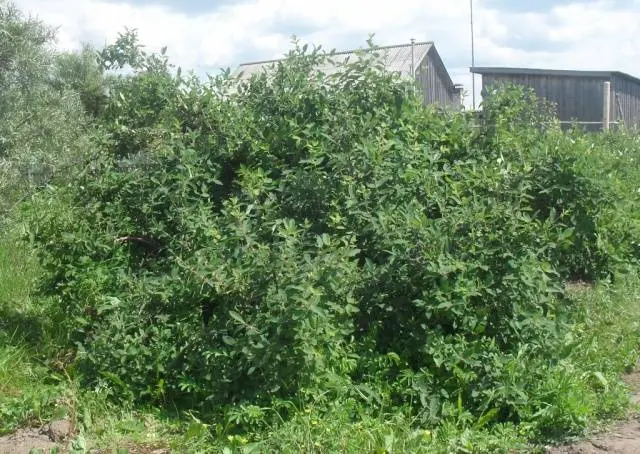
Honeysuckle is unpretentious to growing conditions, only good illumination of the site is a mandatory requirement. With a lack of light, the harvest will be poor, and the berries will be small. It is impossible to place honeysuckle in the lowlands due to the accumulation of cold air and stagnant water.
Any soil is suitable, but the berry will grow best on fertile, loose soils. Only areas with a high content of clay or sand will require cardinal improvement. Before planting, the berry bush is cleared of weeds, pits 40x40x40 cm are dug and filled with planting mixture. It is prepared from fertile soil, peat, compost or humus, taking them in equal parts. Soil with a high PH level is deoxidized with lime or dolomite flour.
Bush planting
It is best to plant honeysuckle in late summer or early autumn. She ends the growing season early, but growth processes continue. Before winter, the bush will have time to get stronger. In spring, planting only container plants or emergency transshipment of honeysuckle to another place with a large clod of earth is allowed.

Bushes are placed at a distance no closer than 1,5 m from each other or other trees. Over time, honeysuckle will grow, and it should be illuminated from all sides. Between the rows leave a space of 2,5 m.
The prepared landing pit is completely filled with water, allowed to soak, then proceed to planting. Under each root, 50 g of superphosphate and potassium salt are added, and if the soil is poor, then an additional bucket of organic matter. An earth mound is poured in the middle of the hole, the plant is set so that the root neck is 3-5 cm below the soil level. The root system is covered with the prepared mixture, lightly tamped, watered abundantly, mulched.
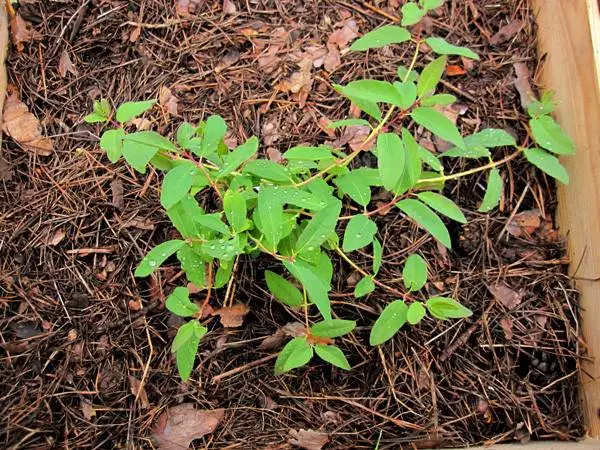
Cultivation
Careful care is needed only for young plants in the first year after planting. An adult, well-rooted healthy honeysuckle requires almost no attention from the owners.
young plant care
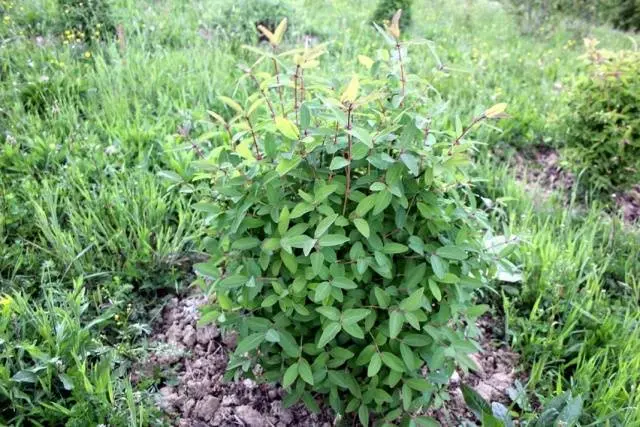
The first months, honeysuckle should be watered regularly, loosen the soil for a better supply of oxygen to the roots, weed out. For the first three years, she does not need regular top dressing if fertilizers were added during planting.
Honeysuckle grows slowly at first. First of all, she is developing the root system, and then the aerial part. Variety Bakcharskaya Yubileinaya differs from others in early fruiting, so this period is reduced to 1-2 years.

At the beginning of autumn, sanitary pruning is carried out – all dry, broken and thickening branches are removed.
Care for an adult plant
Starting from the third year, honeysuckle begins to bear fruit and needs additional feeding. In early spring, literally in the snow, nitrogen fertilizers are applied under each bush. At the end of summer, a liter jar of ash and a bucket of organic matter are buried in the ground.
Further care consists in weeding, loosening the trunk circles to a depth of 5-8 cm and periodic watering during dry periods.
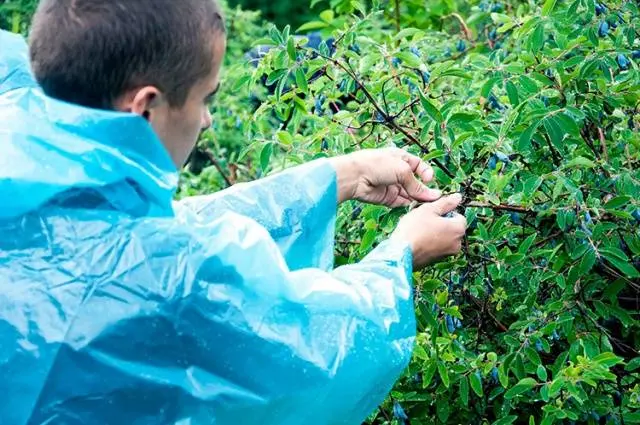
Pruning and wintering
Until the age of 15, honeysuckle is not cut at all, limited to the removal of broken, dry, growing down and thickening branches. Then the bushes are thinned out, cutting off the oldest branches at the base. At the age of 20 years, honeysuckle ages – while maintaining agricultural technology, the yield decreases. You can rejuvenate the bush by cutting it completely at a height of about 15 cm above the ground, next year it will recover, and will bear fruit for up to 10 years.
Variety Bakcharskaya Yubileinaya was created at an experimental station located in the Tomsk region. He endures a drop in temperature to more than minus 50 degrees and does not need shelter.
Methods of reproduction
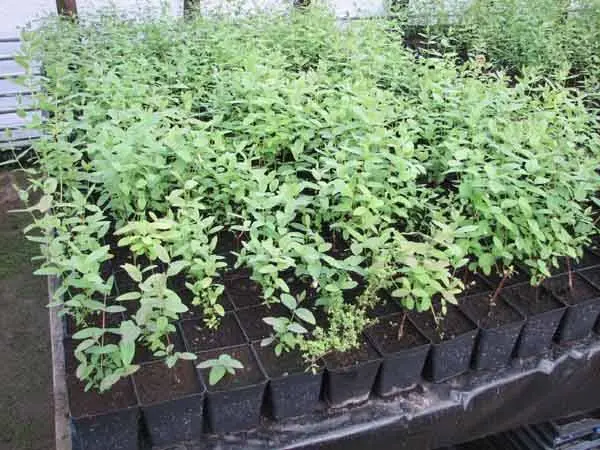
Honeysuckle is not cheap, amateur gardeners can propagate it in one of the following ways:
- seeds;
- green or woody cuttings;
- layering;
- division of the bush.
The most reliable way for non-specialists is to dig in low-lying branches or divide a young, well-grown bush.
Growing problems
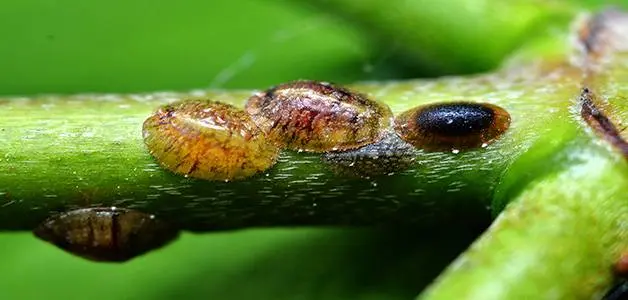
Honeysuckle practically does not get sick, and parasites usually bypass a healthy bush. Possible pests and measures to combat them are described in the table.
Pest | External signs | Control measures |
Leaflet | Caterpillars eat leaves and young shoots during the ripening of berries. | Treat with an appropriate insecticide. From biological preparations Fitoverm, Agrovertin or Iskra-bio are suitable |
aphid | Sucks juice from leaves, causing them to turn yellow | |
willow shield | Sucks the juice from the bark, looks like small dense squiggles |
Of the diseases, only powdery mildew can be called, however, it rarely appears. Treat honeysuckle with Fitosporin.
Among the problems is the re-blooming of honeysuckle, which significantly reduces the next year’s harvest. It occurs due to the fact that the growing season begins and ends early – even in the conditions of the Tomsk region, growth processes stop by the end of July. Sometimes honeysuckle blooms again. In small areas, cut off all the buds by hand.
Reviews










